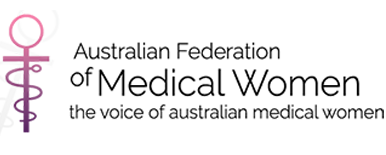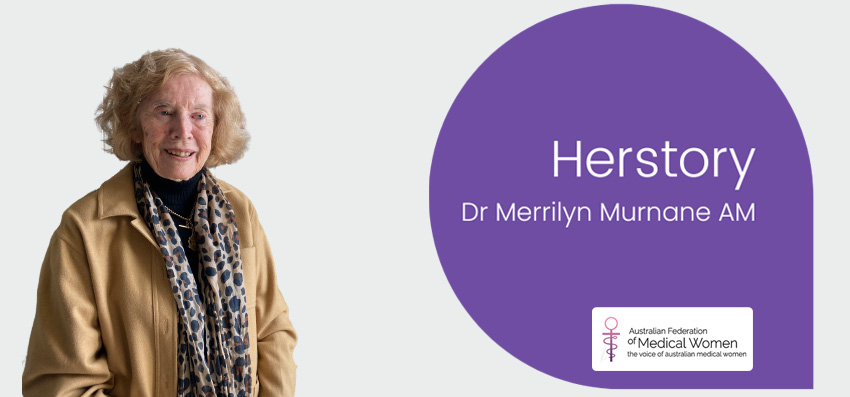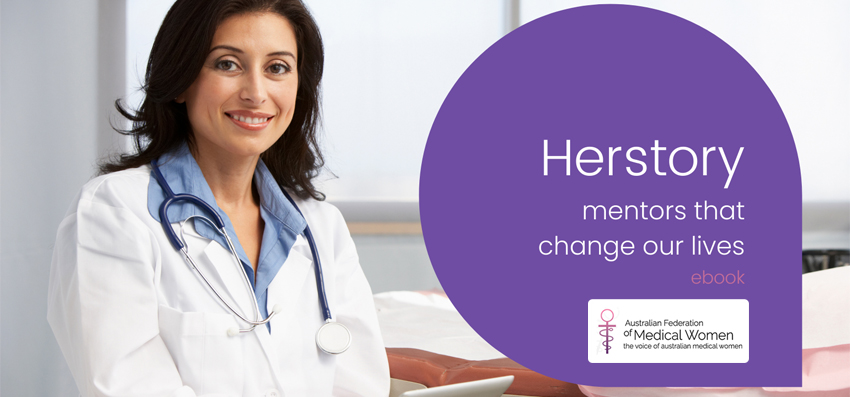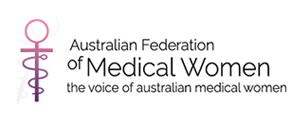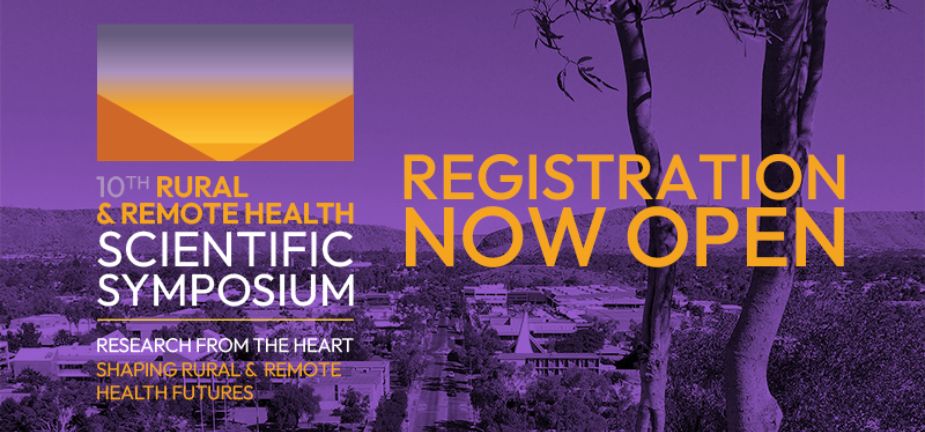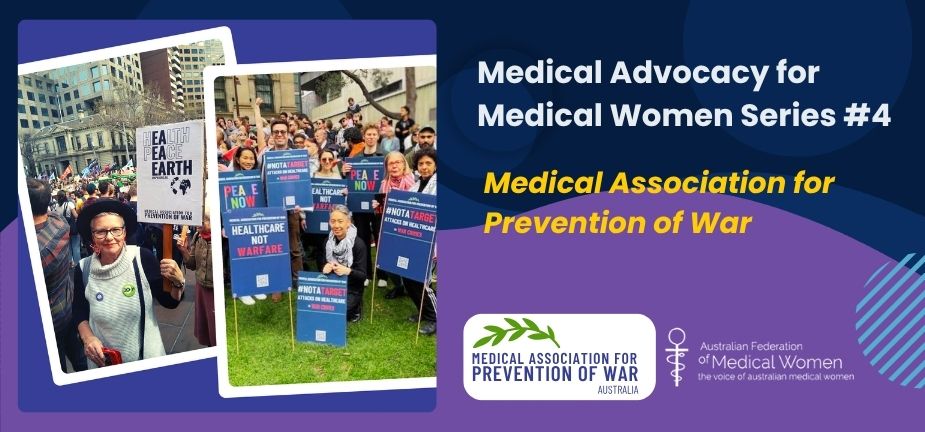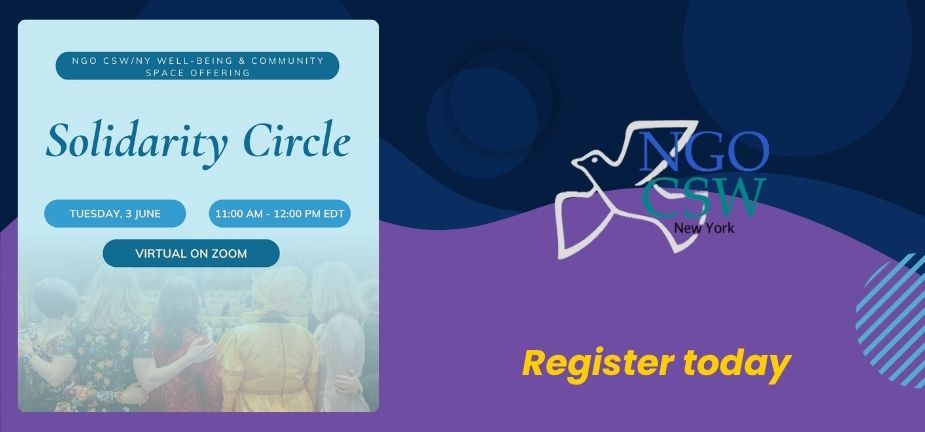Meet Dr Merrilyn Murnane AM
In this issue of Herstory, we are privileged to have Dr Merrilyn Murnane AM, recipient of the 2022 AFMW President’s Honour past President of Victorian Medical Women’s Society (VMWS) and author of Honourable Healers impart her experience and wisdom with us. Aside from being a trailblazing medical woman who set up the state’s first child protection unit, Dr Murnane is also a humble philanthropist and established the Constance Stone Oration award for VMWS.
Dr Murnane’s Story
Name: Dr Merrilyn Leila Murnane AM, MB BS, FRACP, MACLM, DCH, DDU
Country Born: Melbourne, Australia
University Training: University of Melbourne (MB BS) 1954–60; Member of the Royal Australian College of Physicians 1973, consultant paediatrician from 1974, and then received FRACP as a consultant
Year of graduation: 1960
State membership: Victoria
Roles in AFMW: Victorian Medical Women’s Society (VMWS) president 1987–88 and again in 1990
Key achievements in VMWS: Established the Constance Stone Oration which is delivered by a VMWS member who has contributed significantly to the wellbeing of medical women and women’s health.
My Career
My decision to become a doctor came to me as early as ten years of age. I remember reading about and hearing the talks at Sunday school about doctors such as Albert Schweizer in Africa, the inspirational Mackenzie Sisters from Melbourne, one a doctor one a nurse, who set up an obstetric hospital in South Korea. These stories influenced me and inspired me to become a doctor.
After graduating in medicine, I spent two years at Prince Henry’s hospital as a junior and senior resident and then decided to go overseas by the overland route from Columbo to London. I travelled with my sister who had graduated in physiotherapy.
Upon our arrival in London, I applied for both obstetric and paediatric roles and took the one that came first, which was the paediatric job at Schrodells Hospital in north London.
A young paediatrician there encouraged me to continue with paediatrics and arranged for me to do the course at Great Ormond Street in London for three months. This involved attending clinics, ward rounds and giving case presentations. It was during this stage that my decision to make paediatrics my chosen career was cemented and I applied to do the ten-week membership course in Edinburgh. At that time, candidates first had to sit the membership exam in adult medicine, a field in which I had less experience due to my focus on paediatrics. I didn’t pass this exam this first time around and chose to travel around Europe. I then returned to London and passed my DCH (Diploma of Child Health) exam before flying home via the USA. I arrived in Melbourne in December 1964, without a job. The hospital appointments had already been allocated, so I was told to call the Queen Victoria hospital, which I did.
Two men had recently been appointed at the Queen Victoria Hospital: Professor of Obstetrics Carl Wood, an obstetrician and gynaecologist who was famed later for his work in invitro fertilisation, and Professor of Paediatrics Arthur Clarke, a paediatrician from the Royal Children’s Hospital. I was appointed as a paediatric registrar in 1964 and had a wonderful year at Queen Victoria Hospital. There were only two registrars, so as well as our day shifts we worked alternate nights and alternate weekends. It was a very demanding but rewarding year, and it was the year when I met Dame Kate Campbell – during my night round. I deeply admired the women working at the Queen Vic, who as well as Dame Kate included Dr Lorna Lloyd Greene, Dr June Cash, Dame Joyce Daws and Dr June Howqua.
It was the hardest year I’d had up until then, and I still needed to prepare to re-sit the adult general medicine exams. So I moved to Prince Henry’s Hospital, where I was the first woman medical registrar. I eventually passed the MRACP exam and in 1973 I became a member of the Royal Australian College of Physicians. I was made a consultant paediatrician in 1974. I then continued in this role at the Queen Victoria Hospital until it shut down in 1987 and we moved to the new Monash Medical Centre.
The rape crisis centre for adults had been set up at the Queen Vic in the 1970s, to care for women presenting for sexual or domestic abuse. It was found that children were presenting at the hospital for sexual abuse, so I was asked to care for them. When we moved to Monash Medical Centre, I set up the Child Protection Unit. This was an entity situated adjacent to the Accident and Emergency department, with a clinical room, an interviewing and social work room, and an examination room where we had a colposcope. At that stage we had support from SECASA (South-Eastern Centre Against Sexual Assault). When calls came in at night, I would be notified and we would call the social worker to attend. Either a forensic physician or I would perform the examination, according to a roster; the social worker saw the child, counselled them and arranged follow-up appointments. I then dictated reports, which were typed up the next day and immediately sent to the police, which they greatly appreciated. For my work in child protection, I became a Member of the Order of Australia (AM) in 2005.
As well as running the Child Protection Unit, I practised general paediatrics in the hospital and ran a private practice in East Melbourne, doing mainly neonatal work, as well as visiting many other hospitals. In addition to this, I taught Monash medical students in their fifth year of medicine.
As for my personal life, I married in my late thirties and unfortunately could not have children due to endometriosis. When we applied for adoption, I was deemed too old, being over 37, so we were refused. This was a big disappointment for me, but my work provided some sense that I was helping children who were particularly vulnerable.
My first husband died suddenly in 2000, and by 2005 I had retired. An interest in archaeology and the classics led me to enrol in a diploma in archaeology and classics at the University of Melbourne, followed by a post-graduate diploma in archaeology. Unfortunately, my advancement of this path was interrupted when I suffered a sensory stroke. I recalled that in the year 2000, following my first husband’s death, neurosurgeon Dr Elizabeth Lewis had encouraged me to accompany her to Papua New Guinea (PNG) to do some teaching ward rounds and to support students in northern PNG near the Indonesian border. On recalling how powerful this experience was and how great their need was, I returned to do some humanitarian work in PNG each year for a decade. During this time I was fortunate to remarry in 2006 to Reverend Max Griffiths, who was a widower and old family friend. Together, we continued the visits to PNG and set up a mobile health unit that visited twenty villages in the East Sepik area.
The mobile health unit had a teacher and a nurse, and we supported their work financially for more than a decade. While visiting Wewak on the north coast of PNG we saw a rubbish tip village. In my idealistic attempt to help the children there, I attempted unsuccessfully to build a permanent village, and help them attend school by paying their education fees. These fees were very low in Australian terms, but the parents had no money to pay them, so the children played in the rubbish to scrounge for things they could sell.
The visits to PNG continued every year from 2000 until 2020, and during my time there I paid for the education of a number of teachers, student nurses, engineers and doctors, including two women doctors. They have remained in contact with me, and one of the doctors had a little daughter, whom she named Merrilyn, and who is now three years old.
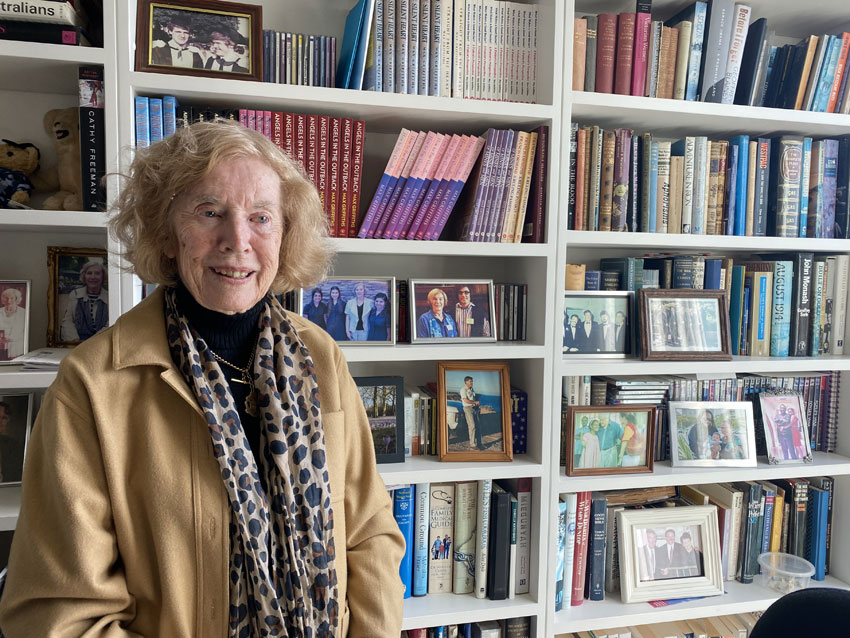
Mentor Information
Thinking back to my time as a student and later as a registrar in training, there were no mentors who took a particular interest in me. Mentoring wasn’t something we ever thought or talked about.
When I entered medicine at the University of Melbourne in 1954, around ten percent of the medical student cohort were women. It was quite different from today. You sat in the same seat when you came into the lecture theatre, your name was marked off each time (to encourage the mandatory attendance of up to eighty per cent of the lectures), and you just knuckled down and worked hard.
When I met Dame Kate Campbell, she encouraged me to continue in paediatrics as a career. I was impressed by her professionalism, and I always remembered her words to me, such as ‘Stand at the end of the cot and observe the baby before you do anything else’. I remember standing beside her and doing this, and it made me a better paediatrician.
Upon reflection, being an avid reader and participating in the Presbyterian Church, where I taught at Sunday school, sang in the choir and created a girls’ club, were valuable to me. My activity at church was influenced by my parents, who were church-goers and I was fortunate to have had a father and mother who were both very supportive of their three daughters being well educated. One sister became a physiotherapist, the other a teacher like my mother, and I became a doctor. My father had served in the First World War and entered university on a retired serviceman’s scholarship to become a veterinary scientist. My mother had to give up her teaching when she married, which was a terrible waste, but that was typical of what happened in those days.
My time working in the Child Protection Unit was a very trying period. The cases we dealt with were tragic, and doctors did not receive any formal emotional support. Nevertheless, I had the assistance of excellent social workers and forensic physicians.
Three Things I Learnt
1. Be kind and conscientious in all your work.
2. Listen to your patients carefully because what they are talking about is very important to them.
3. Practise the highest standards possible. For me personally, my Christian faith is very strong has helped me through my most difficult period
My Pearls of Wisdom for Others
- Don’t give up. Keeping working hard and keep trying, then try again. Often opportunities will open up for you.
- Your behaviour towards your colleagues is very important. Be kind and maintain your professionalism.
- Love what you do.
- Teaching is important, but so is continued learning.
Thank you Dr Murnane for your contribution to children’s health, women’s leadership and for the example you have set for us all at VMWS and AFMW. Your kindness and generosity are deeply appreciated by all at AFMW.
Magdalena Simonis
President, Australian Federation of Medical Women
About ‘Herstory’
The online AFMW Herstory E-Book, gives AFMW members the opportunity to contribute to the AFMW oral tapestry, by forming a compilation of ‘our mentoring stories’, in which we honour those who have changed our lives. Making this an online AFMW story book, encourages us each to consider contributing to building this over the years, into a collection of medical women’s ‘key take home messages’, as we share the wisdom we each have gained from our own lived experiences. The ‘golden nugget of wisdom’ that we would share with someone who asked us about what we have learned.
Add Your Story
If you would like to contribute your story, please download the Herstory template (Word doc), add your details and return the completed form to [email protected]. Please also submit a photo of yourself with this. It can be a ‘selfie’ taken with a good camera that you would be happy to have others see.
Associate Professor Magdalena Simonis AM is a Past President of the AFMW (2020-2023), former President of VMWS (2013 & 2017-2020) and current AFMW National Coordinator (2024-2026). She is a full time clinician who also holds positions on several not for profit organisations, driven by her passion for bridging gaps across the health sector. She is a leading women’s health expert, keynote speaker, climate change and gender equity advocate and government advisor. Magda is member of The Australian Health Team contributing monthly articles.
Magdalena was awarded a lifetime membership of the RACGP for her contributions which include past chair of Women in General Practice, longstanding contribution to the RACGP Expert Committee Quality Care, the RACGP eHealth Expert Committee. She is regularly invited to comment on primary care research though mainstream and medical media and contributes articles on various health issues through newsGP and other publications.
Magdalena has represented the RACGP at senate enquiries and has worked on several National Health Framework reviews. She is author of the RACGP Guide on Female Genital Cosmetic Surgery and co-reviewer of the RACGP Red Book Women’s Health Chapter, and reviewer of the RACGP White book
Both an RACGP examiner and University examiner, she undertakes general practice research and is a GP Educator with the Safer Families Centre of Research Excellence, which develops education tools to assist the primary care sector identify, respond to and manage family violence . Roles outside of RACGP include the Strategy and Policy Committee for Breast Cancer Network Australia, Board Director of the Melbourne University Teaching Health Clinics and the elected GP representative to the AMA Federal Council. In 2022. she was award the AMA (Vic) Patrick Pritzwald-Steggman Award 2022, which celebrates a doctor who has made an exceptional contribution to the wellbeing of their colleagues and the community and was listed as Women’s Agenda 2022 finalist for Emerging Leader in Health.
Magdalena has presented at the United Nations as part of the Australian Assembly and was appointed the Australian representative to the World Health Organisation, World Assembly on COVID 19, by the Medical Women’s International Association (MWIA) in 2021. In 2023, A/Professor Simonis was included on the King’s COVID-19 Champion’s list and was also awarded a Member (AM) in the General Division for significant service to medicine through a range of roles and to women’s health.
